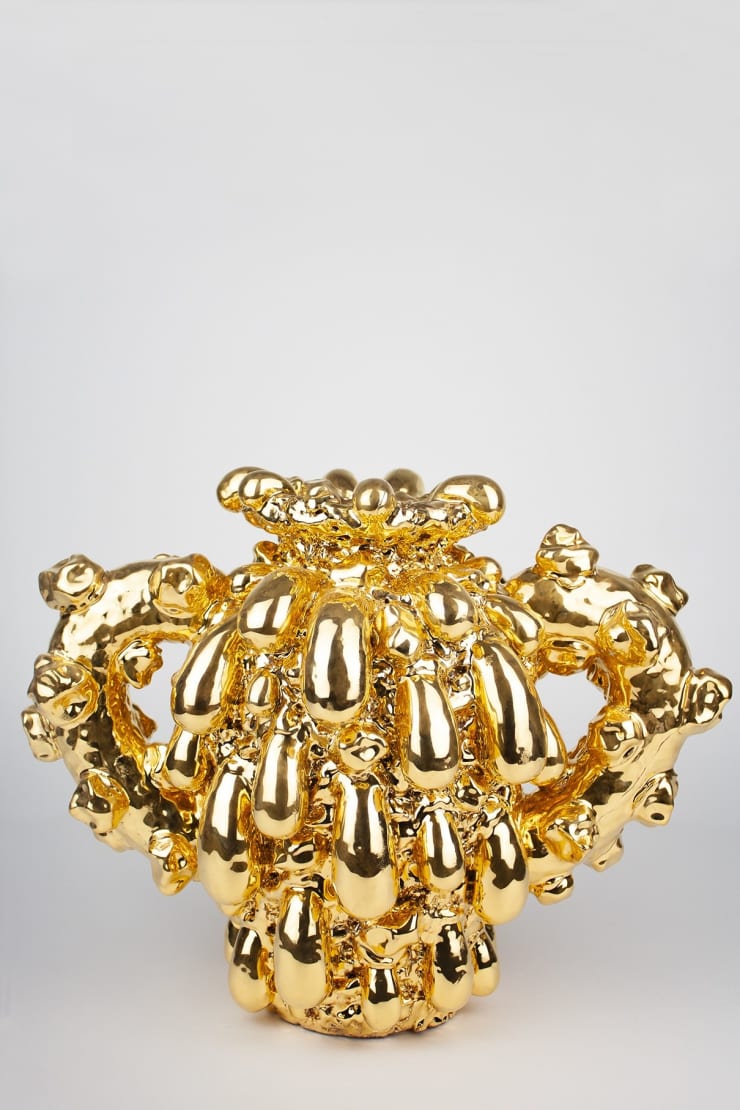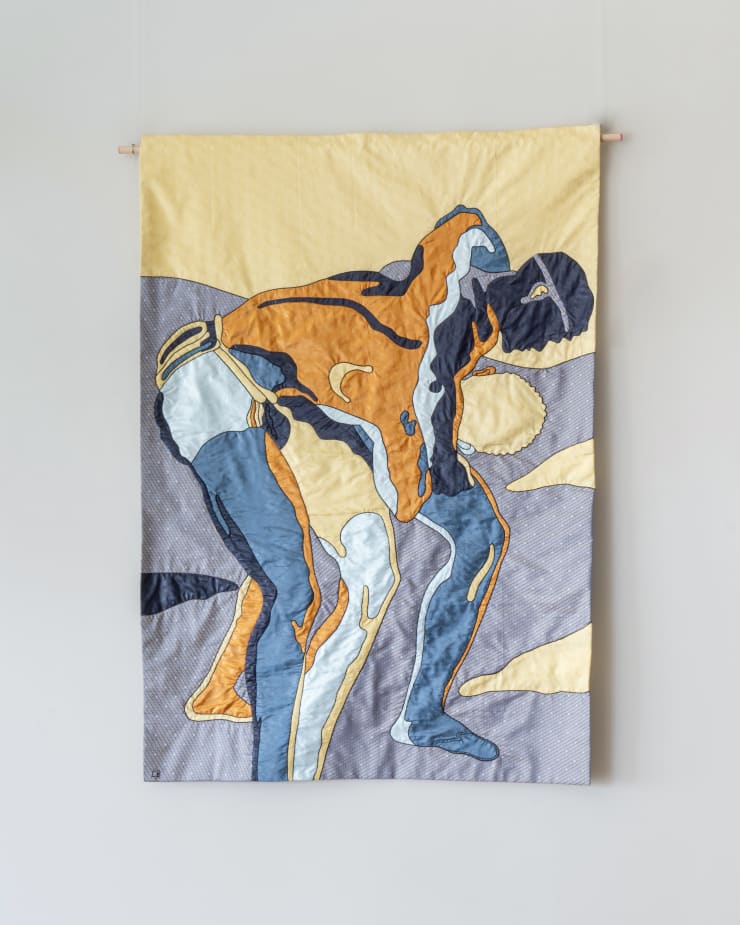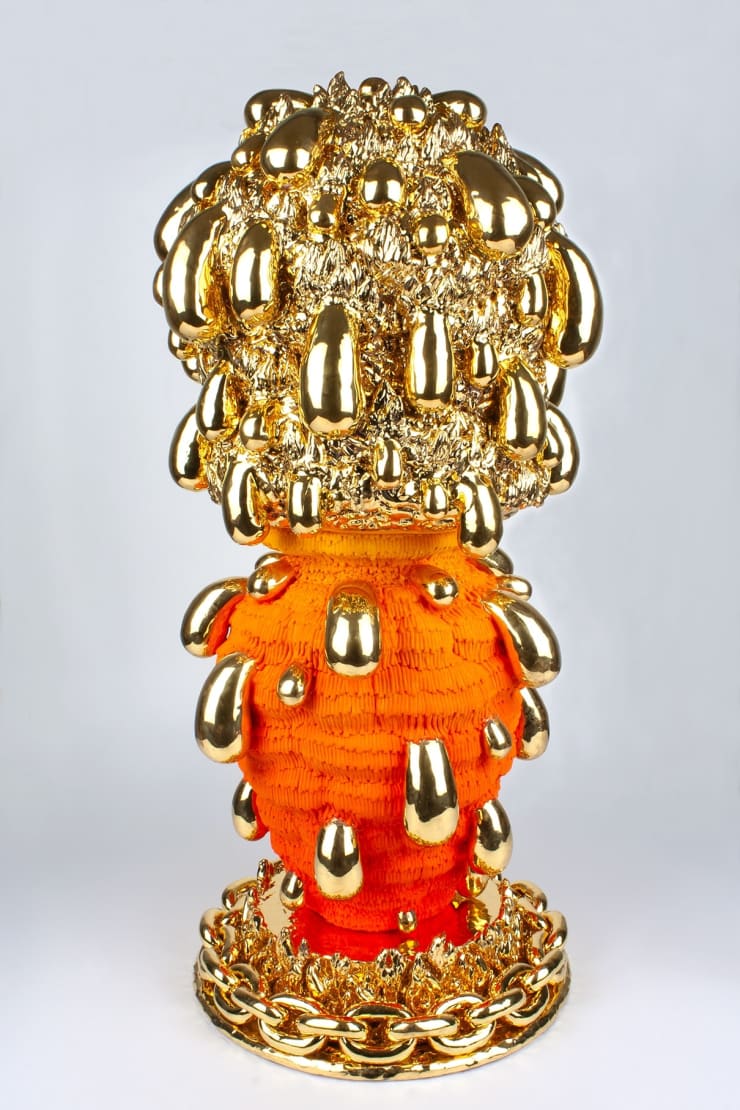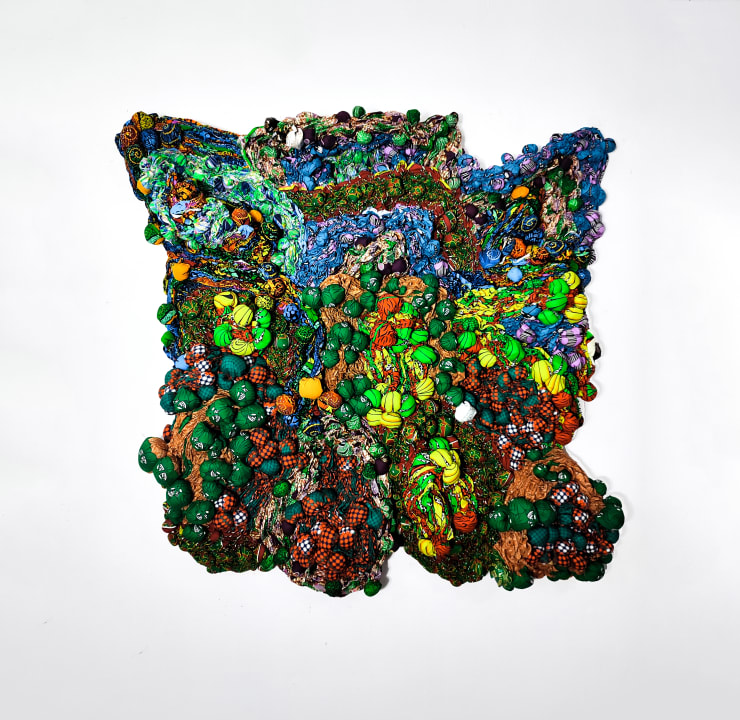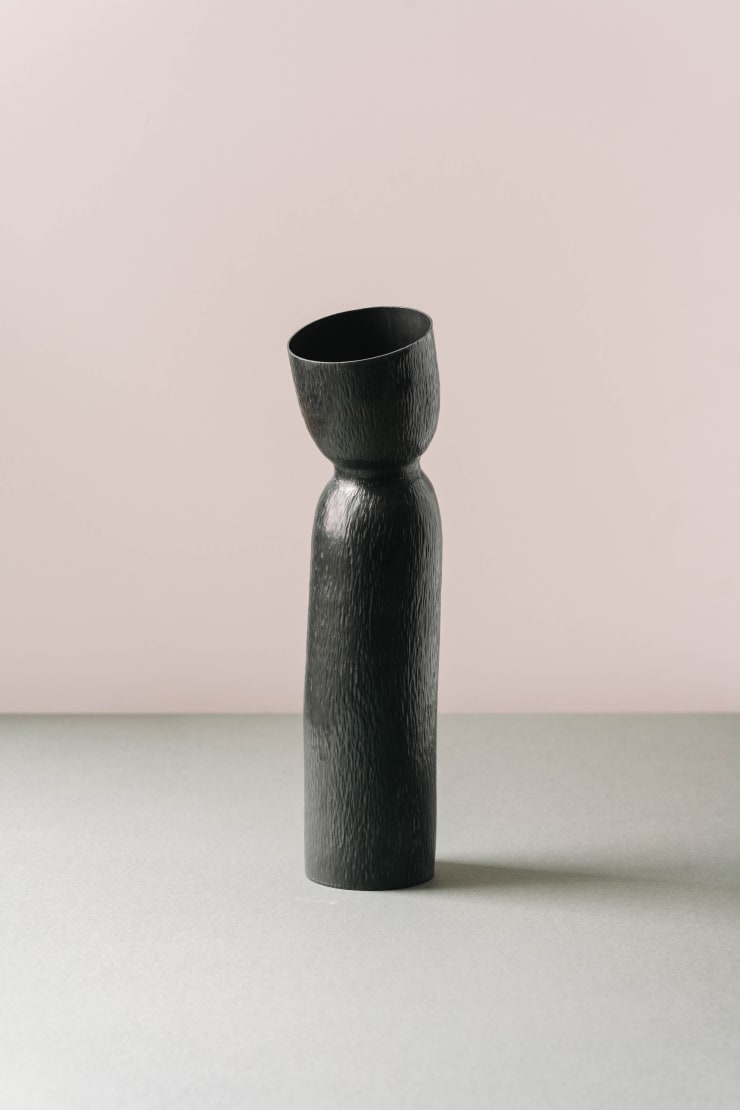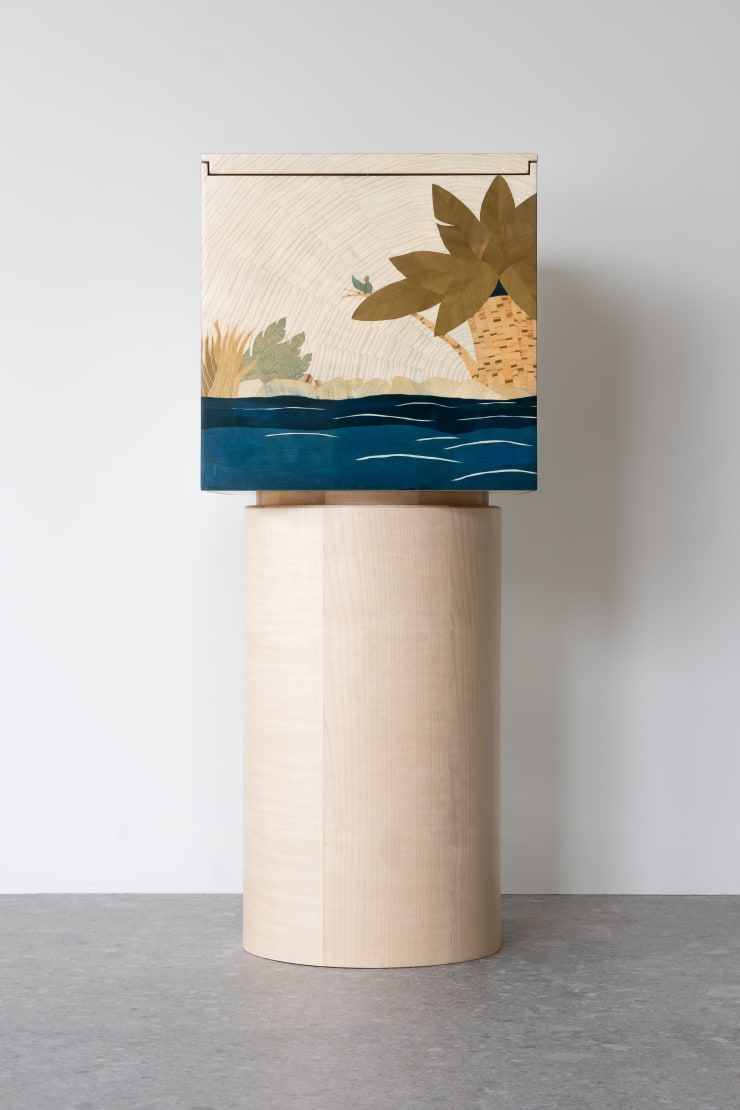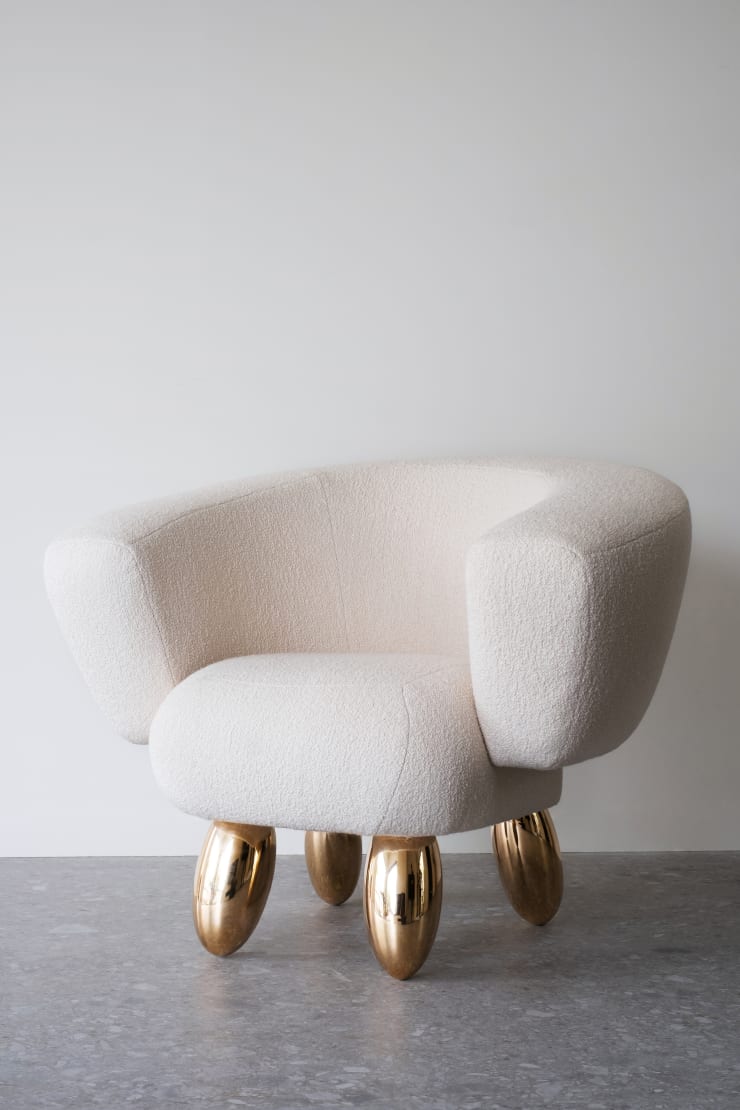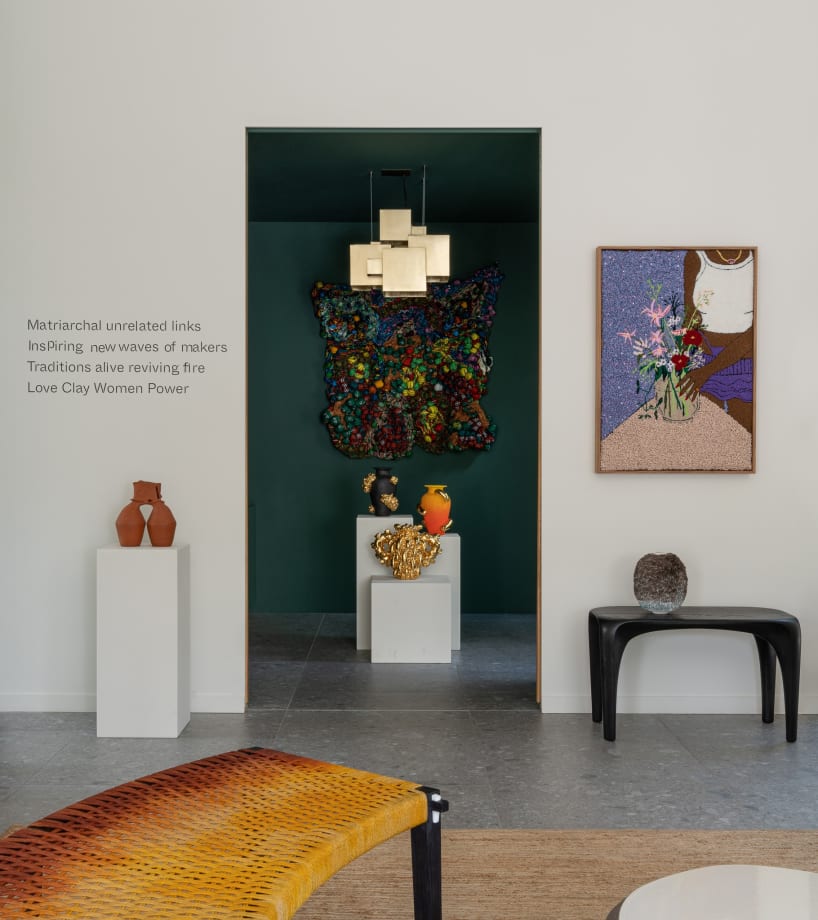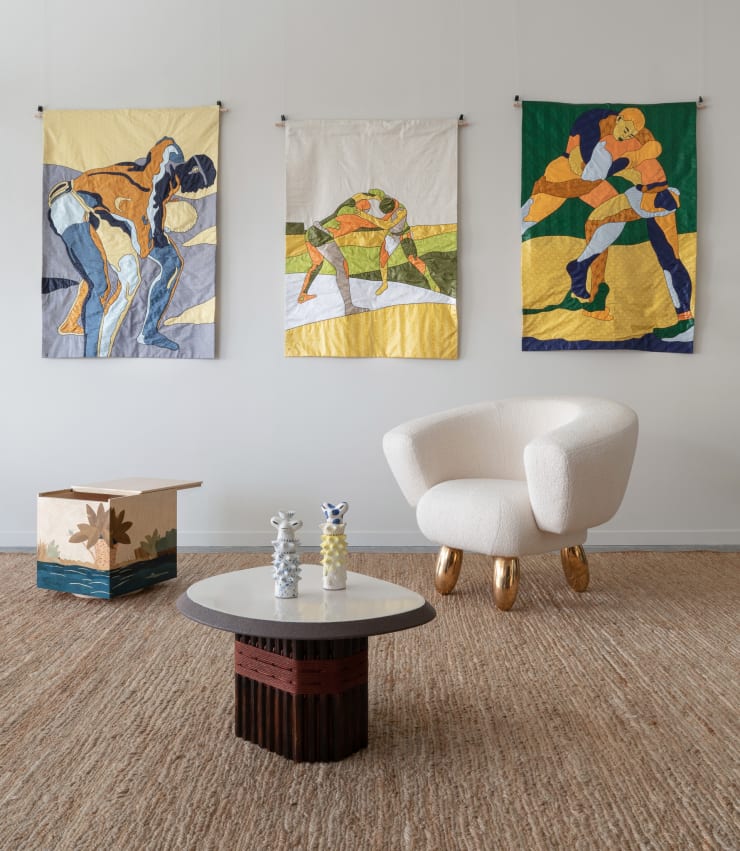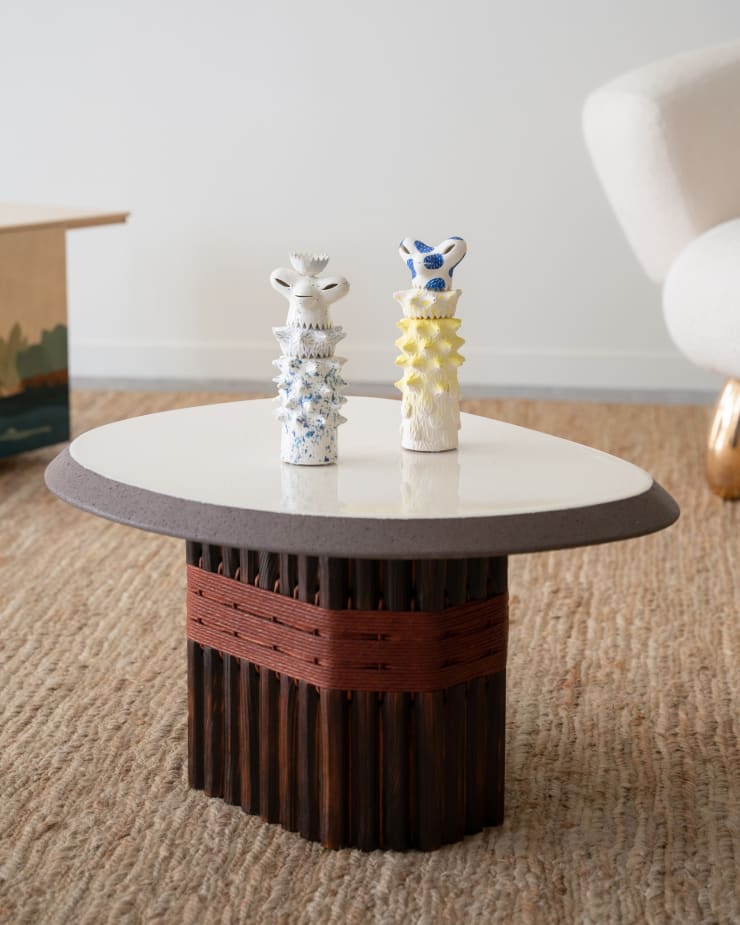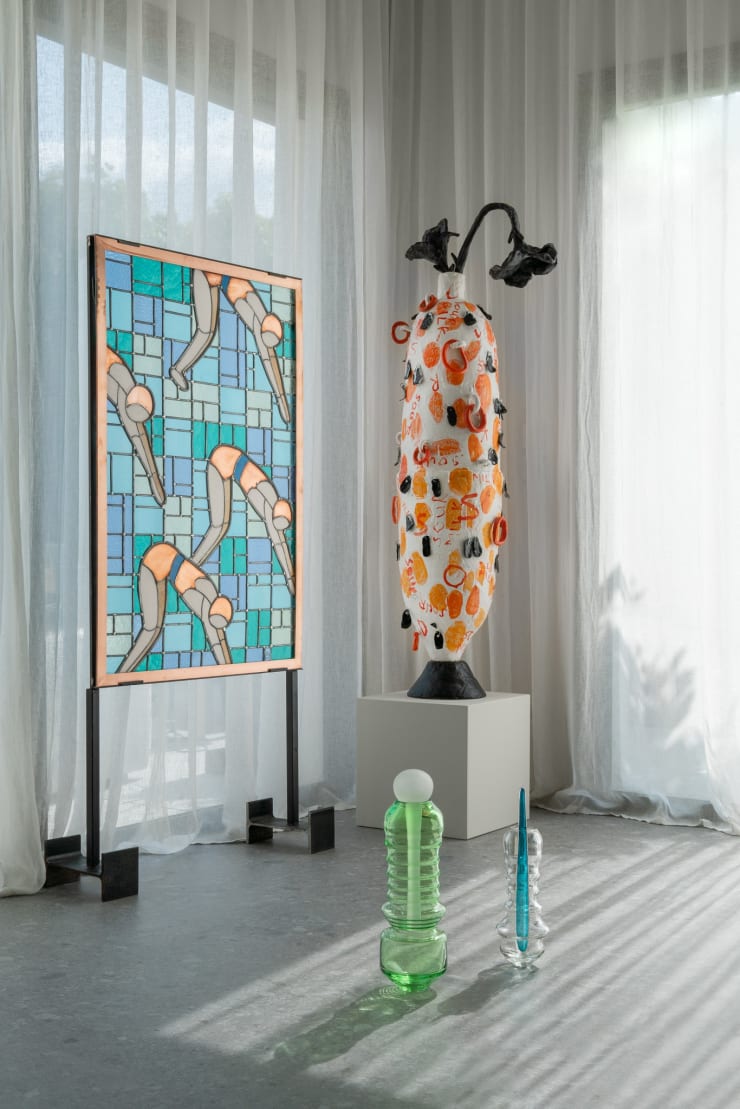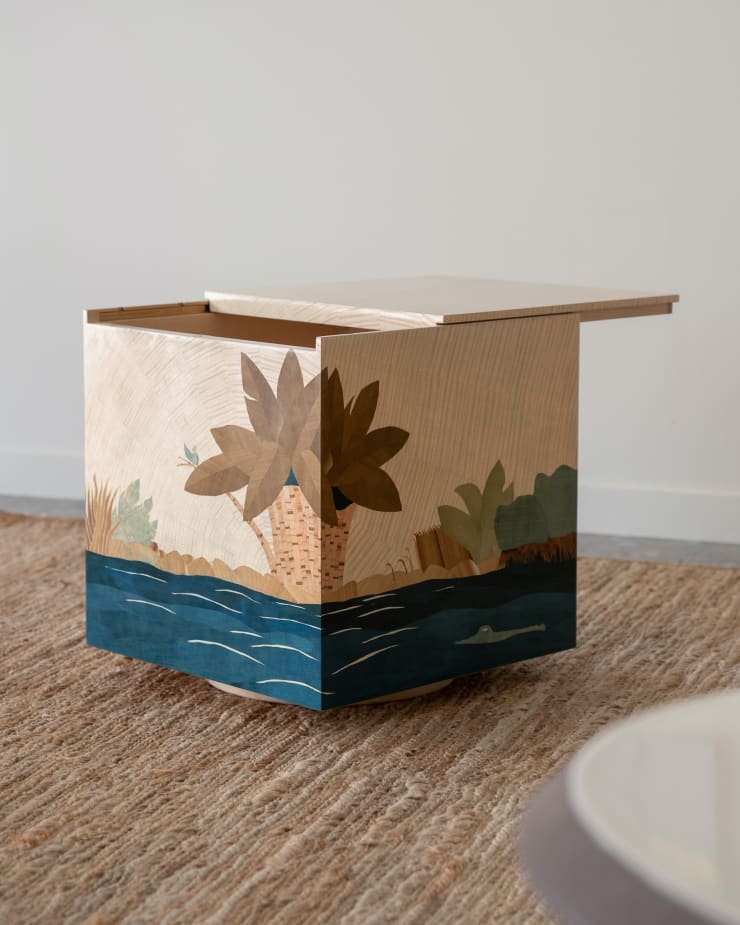Matérialités
"The works in this exhibition raise questions of representation, gender, social and politics. They also question our relationship to nature, to natural elements and the place of dreams in our daily lives."
The works in this exhibition raise questions of representation, gender and politics. They question our relationship to nature, to natural elements and the place of dreams in our daily lives.
The exhibition can be seen from 11 May to 30 July 2023 in the gallery's Bordeaux space.
Bisila Noha (Spain, UK), Talia Ramkilwan (South Africa) and Sola Olulode (UK, Nigeria), challenge the Eurocentric canons of traditional media to speak to the place of women in the art world. They create powerful works from practices historically associated with women and excluded from Eurocentric universities. Bisila Noha elevates clay as an artistic to challenge Western views on art and craft; to question what we understand as productive and worthy in capitalist societies; and to reflect upon the idea of home and oneness pulling from personal experiences in different pottery communities. Sola Olulode dyes batik according to West African traditions, before painting on these fabrics to bear witness to the presence of black British women and non-binary people while Talia Ramkilawan uses rug hooking to create her tapestry-adjacent wall pieces to explore recognition and healing from trauma: she refines her relationships with herself, her family, her friends, her lovers, her homosexuality and her identities as both South African and Indian.
Samuel Nnorom (Nigeria), Francisca Onumah (UK, Ghana) and Gladys Ngarare (Central African Republic) are interested in the human. Samuel Nnorom uses found foam bubbles wrapped in remnants of wax fabric to speak about the human condition in a societal context while Francisca Onumah explores human characteristics such as vulnerability, love, family in her anthropomorphic sculptures made of metal, in particular silver and copper oxide. Gladys Ngarare's stitched monochrome paintings suggest neutral grounds on which healthy and authentic relationships are built. Bonds that are made and unmade, that are tied, untied and re-tied
Xanthe Somers (Zimbabwe) and Mathieu Frossard (France)’s work challenges notions of beauty, good taste and refinement. While Xanthe questions these issues in a post-colonial Zimbabwean context, Mathieu Frossard draws on the European baroque heritage.
Siqou (France) and Anton Laborde (France - Auroville, India), with their respective mediums, porcelain and wood, question the impact of man on nature in its political, mythological and societal aspects. Anton composes paintings with techniques that are part marquetry, part painting and part staining, while Siqou creates stick after stick of porcelain, the fur of her vases appearing as if woven. Both have a creative process that takes time, revealing to us another relationship to time in a world that goes faster and faster. Inviting us to dream with them.
Matang (France), Alix Coco (France), Kartini Thomas (USA Philippines), Humberto da Mata (Brazil), and Aro Vega (France) use furniture to question our relationship to dreams, natural elements and environmental impact. Humberto da Mata's functional sculptures made of recycled paper pulp are born from a process of material economy. They seem to come straight out of a fairy tale and question our relationship to dreams in our daily lives. Just like Alix Coco's sculptures, but using wood as the main material.
While Matang's furniture reveals their research into the assembly of wood without screws or nails, and the potential of plants and natural elements, Aro Vega invites us to travel with his latest collection entitled Escales I.
Jahday Ford and Louis Barthelemy incorporate a strong connection to craft in their creative process. While Jahday Ford creates glass sculptures using both technology to make the design and skilled artisans to make them in order to explore his Carribean heritage in colors and forms, Louis Barthelemy has a deep commitment to the preservation and revival of traditional crafts threatened by globalization. Barthélemy not only collaborates with artisans from around the world, but also helps to make their work known, safeguard their livelihoods and pass on their precious skills.
Isabelle Adragna and Remi Grenouillet use glass and brass respectively to capture light. Rémi Grenouillet discovered a passion for copper during his work as a plumber. He chose to sculpt this metal to create sensitive sculptures and paintings inspired by architecture and aerial views of natural landscapes. Isabelle Adragna composes her scenes like a painting with the technique of lead soldering. Finally Maxime Goleo sculpts wood to create both functional and more sculptural works.



